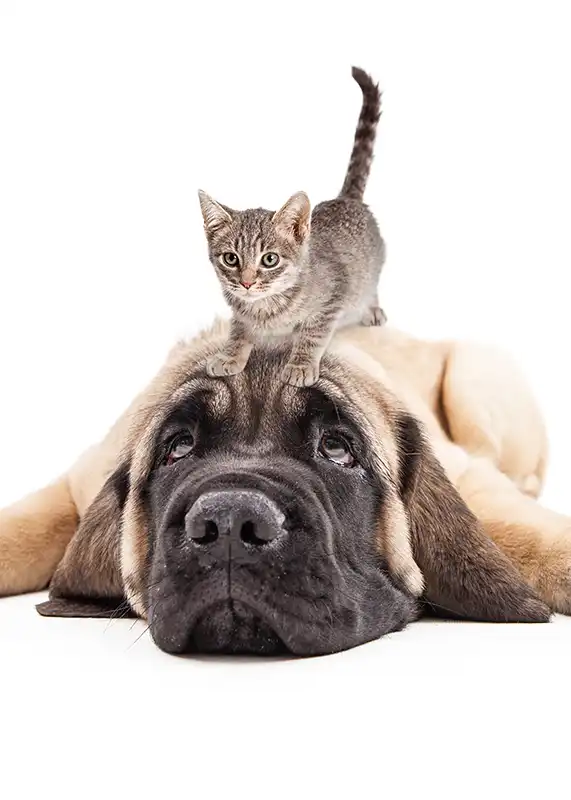At Ashton Animal Hospital, serving families in Downey and Norwalk, CA, we often help pet owners with one of the most common early training struggles: crate training for dogs. If you’ve recently welcomed a puppy—or even an adult rescue—you’ve probably Googled “how to crate train a puppy” or “why does my dog hate the crate?”
We’re here to clear up the confusion and give you a reliable, vet-recommended approach. Crate training doesn’t have to feel like punishment. In fact, when done right, it creates comfort, structure, and a safe retreat for your canine pal.
Why Crate Training Matters
A crate isn’t just a box—it’s a tool for house training, travel safety, and your dog’s emotional health. Dogs are den animals by nature. They love small, cozy spaces when they’re introduced properly. If your pet is still a baby, you have the upper paw.
Here’s what crate training can do:
- Speed up potty training
- Prevent chewing or nighttime roaming
- Create a safe space during stressful times (like fireworks)
- Reduce separation anxiety when you’re away
At our veterinary clinic in Downey, we’ve seen dogs thrive with the structure a crate provides. PetMD has a good article on crate training puppies, which you can read here. Another note for people with puppies: we also wrote a piece on petproofing, which you can read here.
Choose the Right Crate
Size and Style Matter
Your pup should be able to stand, turn around, and lie down comfortably—but not have room to potty in one corner and nap in the other.
Popular options include:
- Wire crates (foldable, visible)
- Plastic crates (great for travel)
- Soft-sided crates (for calmer, trained dogs)
Still not sure what’s best? Our vets near Norwalk can recommend crate types that suit your dog’s breed and behavior.
Step-by-Step Crate Training Method
1. Introduce the Crate Positively
Leave the crate open in a high-traffic area. Add a soft blanket and a treat or toy inside. Let your furry buddy explore without pressure.
2. Make It a Routine
Feed meals in the crate. Toss treats inside. Let your pup go in and out freely at first. The goal is to build positive associations.
3. Close the Door Briefly
Once your dog is comfortable, try short sessions with the door closed. Start with 2–5 minutes while you stay nearby, then gradually increase time.
4. Practice Leaving the Room
Work on helping your pooch stay calm while you step out. Don’t make a big fuss when leaving or returning—that can add to anxiety.
5. Use the Crate for Sleep and Downtime
Eventually, your dog can sleep overnight in the crate or relax there during the day. Keep the crate calm—not a place for punishment.
These crate training tips for new dog owners are designed to build trust, not fear.
Avoid These Common Crate Training Mistakes
Don’t Use the Crate as Punishment
Your canine companion should see the crate as a retreat, not a time-out corner.
Don’t Leave Your Dog Crated Too Long
Puppies can only hold it for a few hours. Adult dogs can go longer, but no more than 6–8 hours unless overnight.
Don’t Force It
Let the process move at your pup’s pace. Rushing can set you back.
If you’re struggling, the team at our Downey vet clinic is happy to help troubleshoot.
Crate Training for Rescue Dogs
Adjusting for Older or Anxious Pups
Rescues might have past trauma linked to confinement. Use extra patience and plenty of positive reinforcement. Start with short, supervised crate sessions and consider pheromone sprays or calming chews if needed—ask your veterinarian near Norwalk for safe options. The San Francisco Society For The Prevention Of Cruelty To Animals (SFSPCA) has an article on crate training older dogs here.
Crate Training FAQs
Is crate training necessary for all dogs?
Not required—but it’s a helpful tool for safety, training, and reducing anxiety. Many dogs come to love their crate.
What’s the best crate training method for puppies?
Start young with short, positive sessions. Be consistent with potty breaks and feeding in the crate. Reward calm behavior.
Can I crate train an older dog?
Absolutely. It may take more time, but many adult dogs adapt well with patience and routine.
Visit Our Downey and Norwalk Veterinary Clinic
Looking for help with crate training for dogs or other behavior issues? At Ashton Animal Hospital, we love guiding pet parents through the early stages of training and care. Whether you’re crate training a new puppy or helping an anxious rescue adjust, our vets near Downey and Norwalk, CA are here to support you.
Need a vet near me? Call Ashton Animal Hospital to schedule an appointment. Visit our Service Page here to learn more about the services we offer and the type of pets we see. Let’s help your pup feel safe, secure, and at home—book your visit today.
This blog is for informational purposes only. Always consult your veterinarian for medical advice, diagnosis, or treatment specific to your pet.







